1. Coordinating Decisions
1.1. Markets coordinate individual decisions through price adjustments.
2. Circular Flows Through Markets
2.1. Chart illustrates how households and firms interact in the market economy.
2.2. Factors of production, goods and services flow in one direction.
2.3. Money flows in the opposite direction.
3. - PPF: The graph shows the PPF for two goods: cola and pizzas. - Any point on the frontier such as E and any point inside the PPF such as Z are attainable. - Points outside the PPF are unattainable.
4. Production Possibilities and Opportunity Cost
4.1. Production Possibilities Frontier (PPF)
4.1.1. Is the boundary between those combinations of goods and services that can be produced and those that cannot.
4.2. Production Efficiency
4.2.1. We achieve production efficiency if we cannot produce more of one good without producing less of some other good
4.2.1.1. Let's to check out our graph: if we are on the PPF surely we will have a production efficiency, but if you are in any point inside the frontier, such as Z, is inefficient.
4.3. Tradeoff Along the PPF
4.3.1. Every choice along the PPF involves a tradeoff.
4.4. Opportunity Cost
4.4.1. Opportunity Cost Is a Ratio
4.4.2. Increasing Opportunity Cost
4.4.2.1. Because resources are not equally productive in all activities, the PPF bows outward.
4.4.2.2. The outward bow of the PPF means that as the quantity produced of each good increases, so does its opportunity cost.
5. Using Resources Efficiently
5.1. The PPF and Marginal Cost
5.1.1. The PPF determines opportunity cost.
5.1.2. The marginal cost of a good or service is the opportunity cost of producing one more unit of it.
5.2. Preferences and Marginal Benefit
5.2.1. are a description of a person’s likes and dislikes.
5.2.2. To describe preferences, economists use the concepts of marginal benefit and the marginal benefit curve.
5.2.2.1. The marginal benefit of a good or service is the benefit received from consuming one more unit of it.
5.3. Allocative Efficiency
5.3.1. When we cannot produce more of any one good without giving up some other good, we have achieved production efficiency.
5.4. Economic Growth
5.4.1. The expansion of production possibilities—and increase in the standard of living is called economic growth.
5.4.1.1. Two key factors influence economic growth:
5.4.1.2. Technological change
5.4.1.2.1. is the development of new goods and of better ways of producing goods and services
5.4.1.3. Capital accumulation
5.4.1.3.1. is the growth of capital resources, which includes human capital.
5.4.2. The Cost of Economic Growth
5.4.2.1. To use resources in research and development and to produce new capital, we must decrease our production of consumption goods and services
5.4.2.2. So economic growth is not free.
5.4.2.3. The opportunity cost of economic growth is less current consumption.
5.5. Gains from Trade
5.5.1. Comparative Advantage and Absolute Advantage
5.5.1.1. A person has a comparative advantage in an activity if that person can perform the activity at a lower opportunity cost than anyone else.
5.5.1.1.1. Absolute advantage involve comparing productivities while comparative advantage involves comparing opportunity costs.
5.6. Economic Coordination
5.6.1. To reap the gains from trade, the choices of individuals must be coordinated.
5.6.1.1. To make coordination work, four complimentary social institutions have evolved over the centuries:
5.6.1.1.1. Firms Markets Property rights Money
